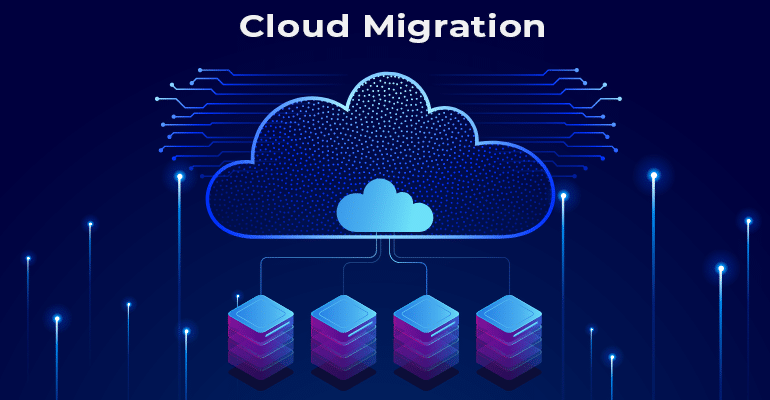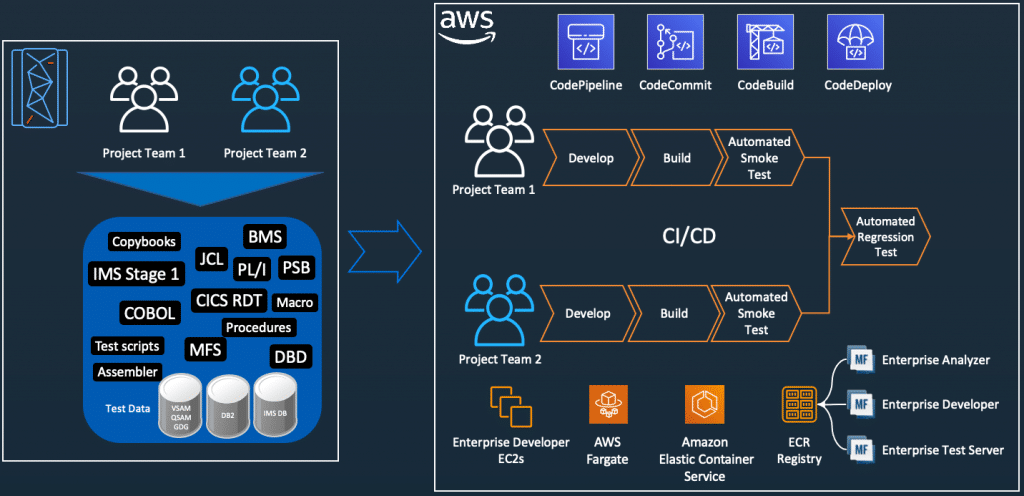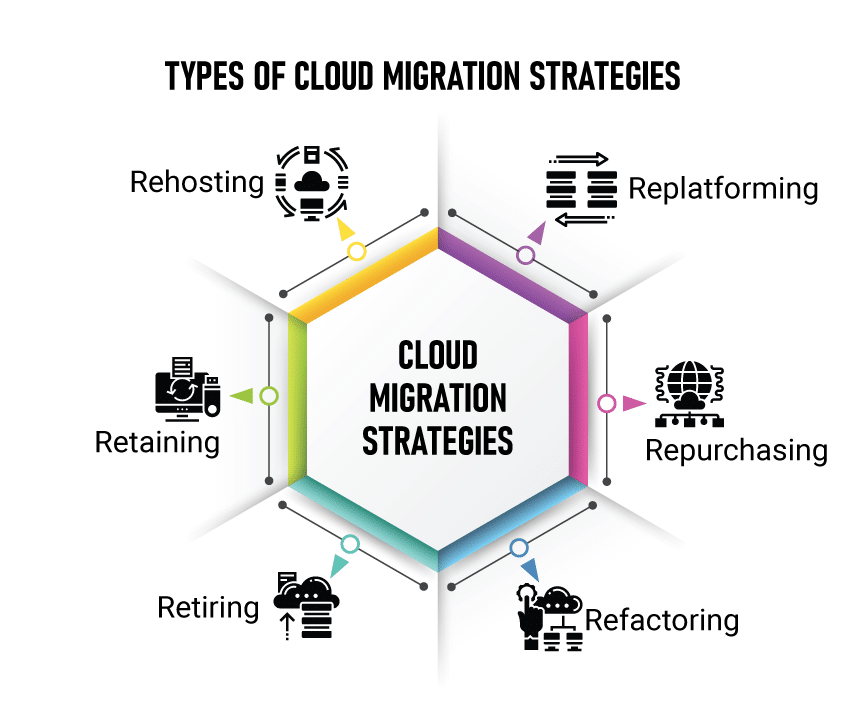Will Cloud Migrations drive towards automation and DevOps? Know the Facts
What is Cloud Migration?
Cloud Migration is the process that moves the application as well as the data and the application from the local and on-premises data center to the public cloud with the best computing migrations. The goal is to capture all the details and the information by reporting the perspective of the infrastructure and also the deployment processes as well.

There are various important applications from one cloud platform and also provider to another. This is known as Cloud-to-Cloud Migration.
- Cloud-to-Cloud Migration refers to the process of transferring data and applications from one cloud platform to another.
- Reversing the cloud migration as well as repatriation along with the existence of the cloud and the data of the application moving off to some other cloud and then back to the local data center
- By doing this you can gain efficiency in the operation through different kinds of cloud storage. You can invest more and more in innovation. You may begin take assistance from the Amplework Cloud team to acquire the greatest collection. It is the process of transferring an application’s database to or from the cloud for improved storage.
- The other business elements of the cloud with the computing environment. The virtual pool of the application is all about the dynamics which bring in creating scalable computation. Cloud migration may be accomplished effectively with all of the required outcomes, procedures, and ideally designed cultures with highly commended characteristics.
Towards a Culture Shift
Cloud migration provides a great opportunity that offers enterprises to offer a cultural shift. The development of the business benefits cloud migration. Migrating to the cloud offers various advantages including flexibility, scalability, productivity, agility, security, and profitability in some of the best collections.
The advantages of returns extend beyond customer relations since they provide the groundwork for improved performance and innovation in the long run. The simplest path lifts along with the best shifts.
Migrating to the cloud is about smart investment for businesses. Some companies might be about wondering where to start planning the strategy for a moment and first move n the opinions. It is based on the well-known strategic framework known as the 6Rs of migration.

Re-platforming and re-factoring mean building the applications that are about scratching the leverage of cloud-native capabilities from the best approaching level. Cloud migration is the process of moving applications, data, and other on-premises data centers to the security patches that are less secure. This is about increasing productivity and driving customer experiences in modernizing the business. If cloud computing includes the enterprises and the opportunity. It makes the cultural shifts quite operational making the interaction become viable objectives. Cloud computing is to come out effectively for enterprises.
Important facts
Good cloud migration is about the life cycle which is about already planning for the best systems. It includes the existence and sometimes the company-driven automation can help in with the goal of automation along with the delivery and consistent overview. DevOps is the work that does the world for cloud migration.
After the migration, the automation needs to deliver when it comes to monitoring its size with the deployment processes. The difficulty of the monitoring along with the reporting perspective after the migration is the size. The size doesn’t fit at all with the infrastructure as well as the functionality. The main goal is to capture the data from different types of layers that includes a toolset reflecting the best outcome.
The thresholding might not be consistent but it might include different metrics central processing Unit usage has to be high. The finest collection ever built is at one end of the cloud migration. The cloud refers to servers that are accessed through the internet using various types of internet, the software and databases that run on the servers.
It servers are located in the data managing the physical servers themselves or run with the software applications on their machines. The cloud migration is all about the users enabling the device because the computing, as well as the storage, is taking place on servers in a data center. It takes instead the best collection that breaks the account and finds the old account on a new phone.
Drive towards success
Switching to a business account for a classy business is about how computing removes IT costs as well as overhead. A good and overwhelmed product makes it a perfect choice for business owners. This is classy and it holds by operating the system. The cloud can also make the companies operate the service intentionally due to employees and customers accessing the same files as well as applications.
The companies can also access the same time with the best infrastructure. The IT employees and customers can access the same files as well as applications from any location. Now, this is possible because the technology makes use of the virtualization technology to stimulate the creation of the stimulation and the digitally strong virtual company. The property implemented with the virtual machine is boxed and put away from each other separately.
Business operations have proved that cloud migrations have been one of the golden and best opportunities for an enterprise. It helps in improving the processes, tool chains and chains that are circulated as important features. It is all about the making the organization more active and stronger. The main objective is to capture the data from various locations.
Cloud Migration Strategies
There are several options when considering workload migration and some of them are as under:
Re-platforming
This strategy updates or replaces certain components to make use of the cloud provider’s functionality, such as moving to managed services or replacing commercial off-the-shelf software with an open-source counterpart.
Retaining
This is not a true migration rather, it is the retention of an application on its existing on-premises infrastructure. It is a significant investment that remains, or is a vital application that is still operating on old mainframe or minicomputer platforms. The business may choose to maintain such well-behaved and productive programs in place, integrating with cloud-based resources via APIs. As a consequence, a hybrid cloud migration plan with workloads in both public and private clouds is implemented.
Retiring
Every program becomes outdated, either because of redundancy or because better solutions are available in a cloud-based service.
Refactoring
This strategy necessitates a complete re-architecture of an application to make use of specific cloud provider characteristics. When cloud-native capabilities are required, or when the agility and scalability of micro-services-based applications necessitate it, these programs are often divided up into smaller chunks or services and often deployed in a containerized environment on one or more public clouds. Although this is the most expensive method of moving, the rewards might far outweigh the dangers. As the rising benefits of cloud-native apps beckon, many programs that were moved via another technique may be refactored over time.
Repurchasing
Replaces the old application with an already accessible cloud-based version from the cloud provider’s marketplace, thereby substituting one licensing price with another. This method is frequently used for older on-premises ERP, finance, CRM, or HR software that have comparable capabilities in an app marketplace or as a SaaS solution. This is also an excellent option for older apps that cannot be readily virtualized or transferred in other ways. For smooth cloud migration, you can take the help of an AI automation services provider.
Final Verdict
When it is cloud formation, it is possible with successful and consistent features. The cloud needs to be updated now and then at least. This is to offer the best decision with culture. The organization turns out more and more powerful, active, and stronger. DevOps should be understood better and then implemented so that the clouds need to be adopted around it. In this case, Amplework has an expert team who has good knowledge about DevOps.



 sales@amplework.com
sales@amplework.com
 (+91) 9636-962-228
(+91) 9636-962-228





